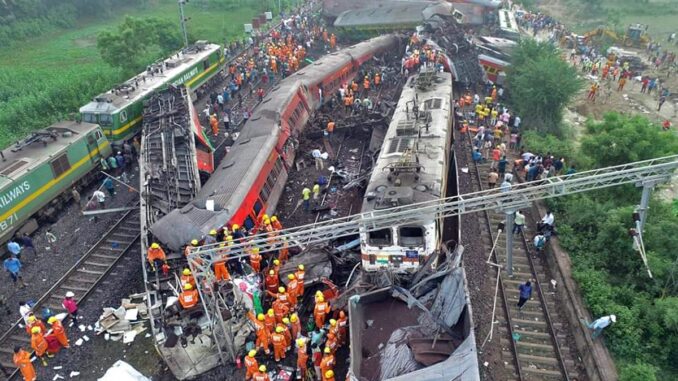
NewDelhi: A high-level inquiry has identified “wrong signalling” as the main cause for the Balasore train accident and highlighted “lapses at multiple levels” in the signalling and telecommunication (S&T) department, but implied the tragedy could have been avoided if past red flags were reported. The independent inquiry report submitted by the Commission of Railway Safety (CRS) to the Railway Board said despite the lapses in signalling work, corrective actions could have been taken by the S&T staff if “repeated unusual behaviour” of switches connecting two parallel tracks were reported to them by the station master of Bahanaga Bazar, the site of the accident.
10 points on the Odisha train accident’s CRS report:
Inquiry report blames “wrong signalling” for Balasore train accident and cites “lapses at multiple levels” in Signal & Telecommunication department.
Report says accident could have been prevented if S&T staff were informed of “repeated unusual behaviour” of switches connecting parallel tracks by station manager.
Report says non-supply of approved circuit diagram for replacing electric lifting barrier at level crossing gate 94 led to “wrong wiring” by field supervisors.
Report says similar incident happened on May 16, 2022 at Bankranayabaz station due to wrong wiring and cable fault and corrective measures were not taken.
The triple train accident on June 2 killed 292 people and injured over 1000.
Report says initial response to disaster should be faster and advises Railways to review disaster-response system and coordination with NDRF and SDRF.
Report concludes that rear-collision was due to “lapses in the signalling-circuit-alteration” done at north signal ‘goomty’ in the past and during signalling work related to level crossing gate 94.
Report says these lapses caused wrong signalling to train no. 12841 which collided with goods train standing on UP loop line.
Report recommends updating completion signalling wiring diagrams, other documents and lettering of signalling circuits at site.
Report suggests following standard practices for signalling-modification work, carrying out alteration with approved circuit diagram and officer’s presence, and deploying separate team for checking and testing modified signalling circuits and functions.
Bureau Report
Leave a Reply